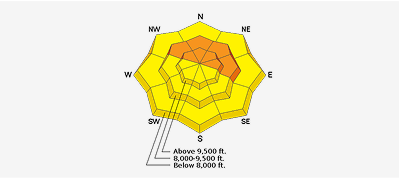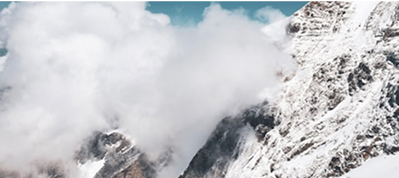The two minor things to watch for today are small wind slabs that may crack out along steep ridgelines and sluffing of the loose sugary "near surface facets". Both of these problems are only found if you are getting into very steep terrain where the slope angle is nearing 40˚ or steeper. Both of these problems are very manageable if you are aware of them and pay attention. If you are finding stiff crusts, you are in an area where you might get a wind drift to crack out. If you are finding nice loose snow that is good turning, that snow is most likely quite sugary and will sluff if it's on a steep enough slope.
As I travel around the backcountry and look at various slopes, I speculate about the potential for the current surface to act as a weak layer when we get more new snow. Southerly facing slopes have sun crusts so these won't be an issue. West, north and east facing slopes are where you find loose sugary snow on the surface. Some slopes are so blasted by the wind that there isn't any loose snow to act as a weak layer. Some slopes have a very evenly distributed layer of sugary snow. I've found a number of these recently that will DEFINITELY be off limits with a new snow load. Then there are others that have a wind crust on the surface but loose sugary snow just underneath. These will be tricky. As a matter of fact, it all could be quite tricky depending on how the future storms shape up.
The message here is that we are accustomed to the current low avalanche danger but things could easily change quickly during upcoming storms.









